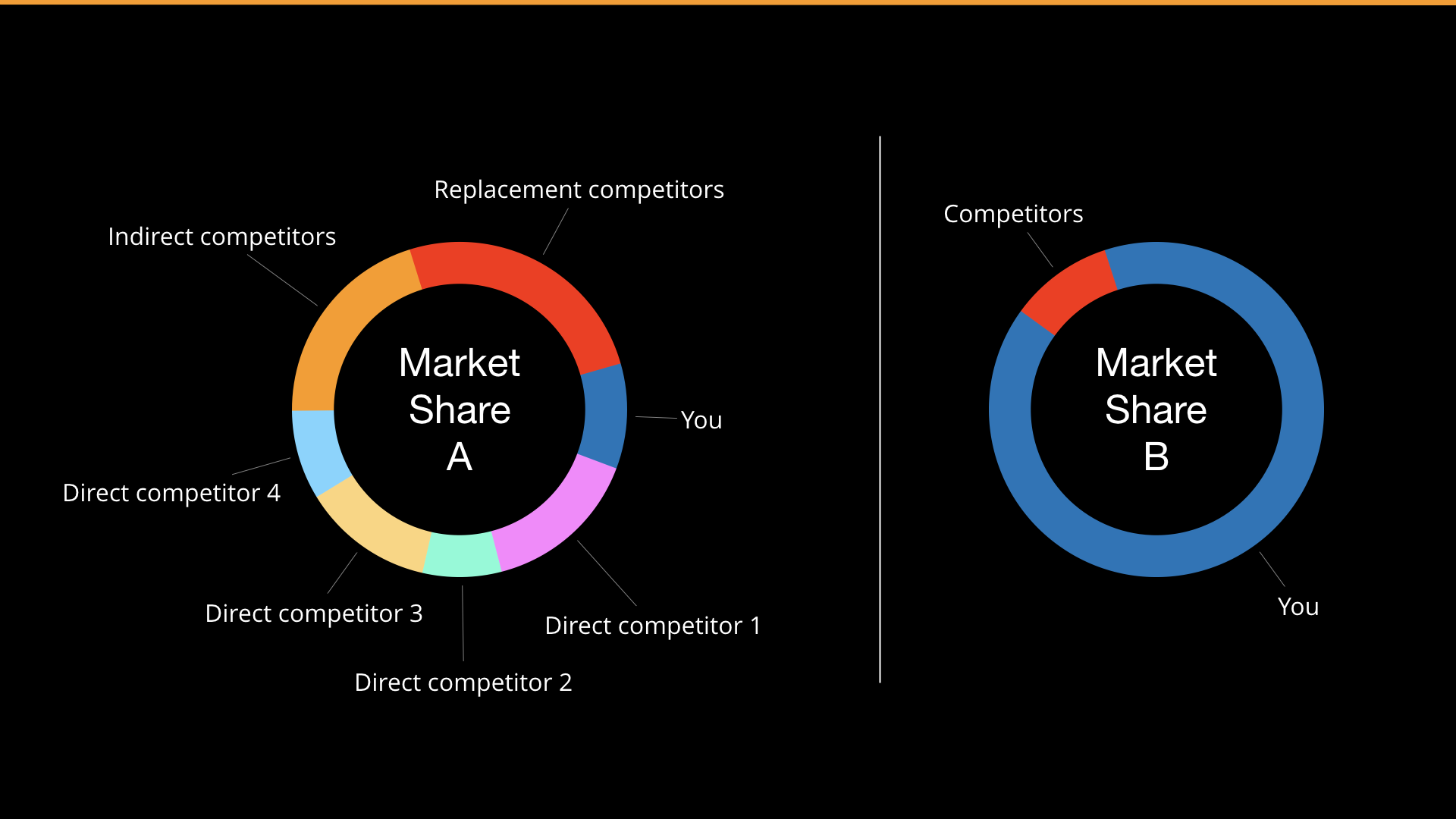Blog
CATEGORY: digital-marketing
When times are tough, you build share.

The famous quote from Procter & Gamble CEO A.G. Lafley, in the Wall Street Journal is worth considering in more depth in the current world order. It’s been proven that an increase in marketing spend during a slump can gain a long-term advantage for a brand. But many marketers, constrained by budgets and circumstances, won’t be able to use this strategy. But during this downturn, share is not just market share, it is also share of voice.
In our recent webinar “communication through a crisis” we referred to the insights made over a decade ago in the Harvard Business Review when they analysed previous recessions. And their words are just as relevant today as they were then.
“Company budget cuts often affect marketing disproportionately. Marketing communication costs can be trimmed more quickly than production costs—and without letting people go. In managing their marketing expenses, however, businesses must take care to distinguish between the necessary and the wasteful. Building and maintaining strong brands—ones that customers recognize and trust—remains one of the best ways to reduce business risk. ”
Protecting your brand and promoting your expertise is just as necessary in uncertain times – perhaps even more so. And there is plenty that industrious marketing teams can do in this digital age, even with limited budgets.
Building brand share in a digital world
The difference of today’s challenges is that many avenues for brand building and lead generation are currently not open to us. For those businesses who relied on face to face promotion through trade shows, networking events and local sponsorships have to realign their marketing budget and consider alternative ways to get their message out.
Focus instead returns to the work-horse communications channels, and with countries in lockdown experiencing a minimum increase of 30% web traffic (and much from individuals access rather than necessarily the company IPs) focusing on the digital is a no brainer.
Building share of voice is just as important as market share in uncertain times
Whilst there may be a decrease in direct response conversions, representative of businesses tightening purse strings, content conversions are up as people are eager for insight and inspiration in this unprecedented time. People are listening, so you need to make sure you have, not only a voice, but something valuable to say.
The connection between share of market (SOM) and share of voice (SOV) has been proven. The higher your share of voice compared to your actual market share, the more likely your brand is to grow its market share in the subsequent year. This could help you establish an advantage that could be maintained for many years. Moreover if your competitors are reducing their prominence you have even more opportunity to present yourself as a strong business. Read more here
Unify your comms channels and repurpose your materials
OTS (opportunities to see) is an important metric in media planning, but can be just as insightful with multichannel campaign planning. By coordinating your email, social and digital channels the halo effect of the repetition of a message can be more impactful than an array of different messages. By most effectively using and reusing the content you have created and repurposing for each channel you can amplify your message efficiently.
Reduced “noise” during a downturn provides opportunities
For example; a new product launch may actually have greater impact during a downturn than at other times, for several reasons. The number of new releases tend to be less during economic slowdown, so there is less competition for the spotlight. Equally if your competitors are doubling down then they are less able to create a “me-too” product at speed. So your new news is unique. If you are one of the lucky ones with some budget at your disposal, because media costs are likely to be lower, advertisers should get more bang for their buck. These savings may be compounded by the relative ease of cutting through a less cluttered atmosphere.
Display your expertise to grow your marketing lists
People are willing to give you
their contact details if the value exchange is sufficient. Whilst your blog
post may peak their interest, a content extension e.g. a whitepaper, checklist
or infographic can both demonstrate your expertise but also entice them to part
with their contact details – which you can then use to build and nurture a
relationship. Unfortunately, with lower budgets people might not be able to buy from you at the moment. However, you can still make progress with these prospects. Establishing yourself as a thought leader with valuable content builds your credibility and your position as 'trusted advisor'. By continuing to provide valuable content, when the budget does become available, you are likely to be in a good position to deal with them.
It is content marketing 101, but something not every business has embraced, until now.
Email newsletters are a win-win.
Often overlooked, newsletters are a hugely effective communication stream for both customers and prospects. They also benefit companies and consumers alike. Email newsletters give businesses a forum to send multiple messages to a captivated, qualified audience. It gives marketers the opportunity to build the relationship with the contact, when they first put their hand up and said “I am interested in you” and drive them back to your website to grow their familiarity with you and your offer and keep your business front of mind.
Ultimately, market uncertainty offers a rare opportunity for proactive firms to improve their competitive advantage, as long as these are well considered and carefully tailored.
Don’t throw that opportunity away
You need to remember that
emailing is a privilege and not a right of marketers. If someone has invited you to engage with
them and has indicated that they are interested in your insight – that is not
an invitation to mercilessly send sales messages or send messages of no value
to them.
The 80/20 rule
When plotting your email campaigns and choosing the content to include, aim for an 80/20 mix using the Pareto Principle. Simply put: 80% of your content should be devoted to valuable and useful information, and only 20% should be devoted to the promotions, sales, and products/services you’re selling
I am sure that you received many messages from companies at the outset of this crisis desperate to say something – but that something was that they were doing what they were supposed to do – “we have made sure all our staff wash their hands”. I am being flippant, but with no added value in these messages I am sure that those business’ would have seen significant uplifts in their unsubscribe rates and therefore damaged their opportunity to talk to these contacts ongoing, simply because they panicked and didn’t think through the content they were sending.
Understand what your contacts needs are now
What are the questions that your subscribers might have right now? Put those at the centre of your messaging.
Listening to your audience and understanding what content resonates with them is one of the most crucial aspects of marketing—and that’s especially true in times of a crisis when a well-intended campaign might come across as tone-deaf. Don’t be afraid to ask your subscribers for feedback on what they’d like to hear from you, either by replying to your emails, filling out a survey, sharing their thoughts on social, or whatever other feedback channels you deem appropriate.
Take a look at our content marketing in a crisis piece for a few more pointers and the efficacy of single question surveys, which are simple to set up and extremely effective, both for driving engagement and helping you understand your contacts.
In short: DELIVER VALUE IN ANY WAY YOU CAN
For more practical insight into communication in a crisis take a look at our webinar.
Solutions
Email marketing healthcheck
We are confident that we can help you, which is why we offer a free healthcheck to identify potential issues with your current programme and free advice on things that could be done to improve it.

